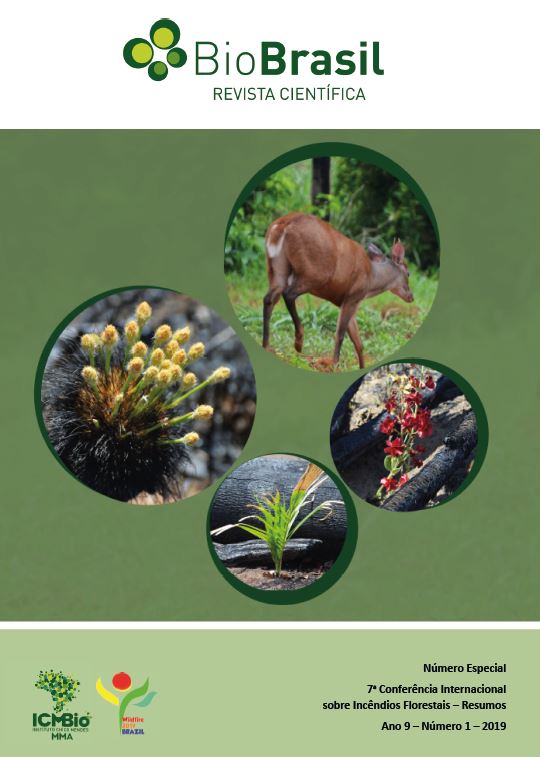Burning questions
effects of fire on vegetation in British Columbia, Canada
DOI:
https://doi.org/10.37002/biodiversidadebrasileira.v9i1.1303Keywords:
Ecology, vegetation science, fire, resilience, botanyAbstract
British Columbia has recently experienced the 2 worst wildfire seasons in recent history. This spurred a need for greater information on ecosystem responses to fire. We interviewed over 60 decision makers; their "Burning Questions"encompassed the response of ecosystems and plants in general, groups of plants (e.g. forage, invasives) specific plants (e.g. culturally important, berry species) and implications for restoration, reforestation, watershed stability and carbon balance. We analysed data on the long-term response (up to 20 years) of understory plant communities after wildfires, clearcutting and slashburning, and restoration burns from over 3800 plots. The post-fire plant community composition was most highly related to longterm fire history/fire climate and local site moisture and nutrient gradients. Differences between recently burned and unburned sites were statistically significant but comparatively small in relation to broader geographic and site level gradients (2.6% versus 26% of total variation). Changes caused by burning did not shift the burned communities outside of the range of variation found in unburned communities within the same community type. Communities with the greatest exposure to fire historically (drier boreal and sub-boreal community types) had the most fire adapted species and are most resilient, whereas communities with a history of infrequent fire (wetter montane and subalpine forests) were more likely to undergo changes after fires. Conversely, the effect of several decades of fire exclusion is most evident in highly fire-adapted plant communities. Dry plateau lodgepole pine forest have been profoundly impacted by the cumulative effects of recent disturbances including mountain pine beetle, salvage logging and wildfires. The condition of grasslands associated with south-facing slopes in the aspenmixedwood landscape may be declining. In the dry southern interior, restoration burning led to reductions in conifer regeneration and woody debris, some mineral soil exposure, and some invasive plant species. Development of late seral bunchgrass was slow, likely due in part to grazing by animals. Reforestation after fire was generally successful. Burned sites provided good ungulate forage and cover of berry producing plants for 20 years. Fire enhanced berry producers over other ericaceous shrubs but had very negative effects on a medicinal - devil's club.
Downloads
References
Published and draft tions - with references - based on this work as well as a number of presentations are available at www.db2020.net.
Downloads
Published
Issue
Section
License
Copyright (c) 2021 Biodiversidade Brasileira - BioBrasil

This work is licensed under a Creative Commons Attribution-NonCommercial-NoDerivatives 4.0 International License.
Os artigos estão licenciados sob uma licença Creative Commons Atribuição-NãoComercial-SemDerivações 4.0 Internacional (CC BY-NC-ND 4.0). O acesso é livre e gratuito para download e leitura, ou seja, é permitido copiar e redistribuir o material em qualquer mídia ou formato.











